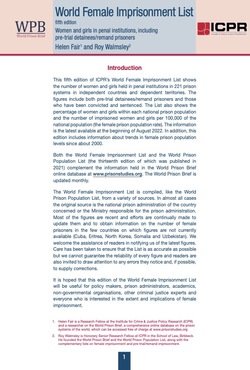By Karol Lucken and Thomas G. Blomberg
The purpose of American Penology is to provide a story of punishment's past, present, and likely future. The story begins in the 1600s, in the setting of colonial America, and ends in the present As the story evolves through various historical and contemporary settings, America's efforts to understand and control crime unfold. The context, ideas, practices, and consequences of various punishment reforms are described and examined. Though the book's broader scope and purpose can be distinguished from prior efforts, it necessarily incorporates many contributions from this rich literature. These many contributions are explicitly discussed in the book, and their relationship to the story of American penology is self-evident (e.g., the rise of prisons, reformatories, probation, parole, and juvenile courts, the origins and functions of prison subcultures, the needs of special inmate populations, the effectiveness of community-based alternatives to incarceration). It is important to acknowledge that while this book incorporates selected descriptions of historical contingencies in relation to particular eras and punishment ideas and practices, it does not provide individual "histories" of these eras. Rather than doing history, this book uses history to frame and help explain particular punishment ideas and practices in relation to the period and context from which they evolved. The authors focus upon selected demographic, economic, political, religious, and intellectual con-tingencies that are associated with particular historical and contemporary eras to suggest how these contingencies shaped America's punishment ideas and practices. The purpose is to inform the reader about American penology's story as it evolved over several centuries. The focus is purposely narrowed to major punishment reform eras and selected historical influences. In offering a new understanding of received notions of crime control, Blomberg and Lucken not only provide insights into its future, but also show how the larger culture of control extends beyond the field of criminology to have an impact on declining levels of democracy, freedom, and privacy.
New York: Aldine de Gruyter, 2000. 400p.





















